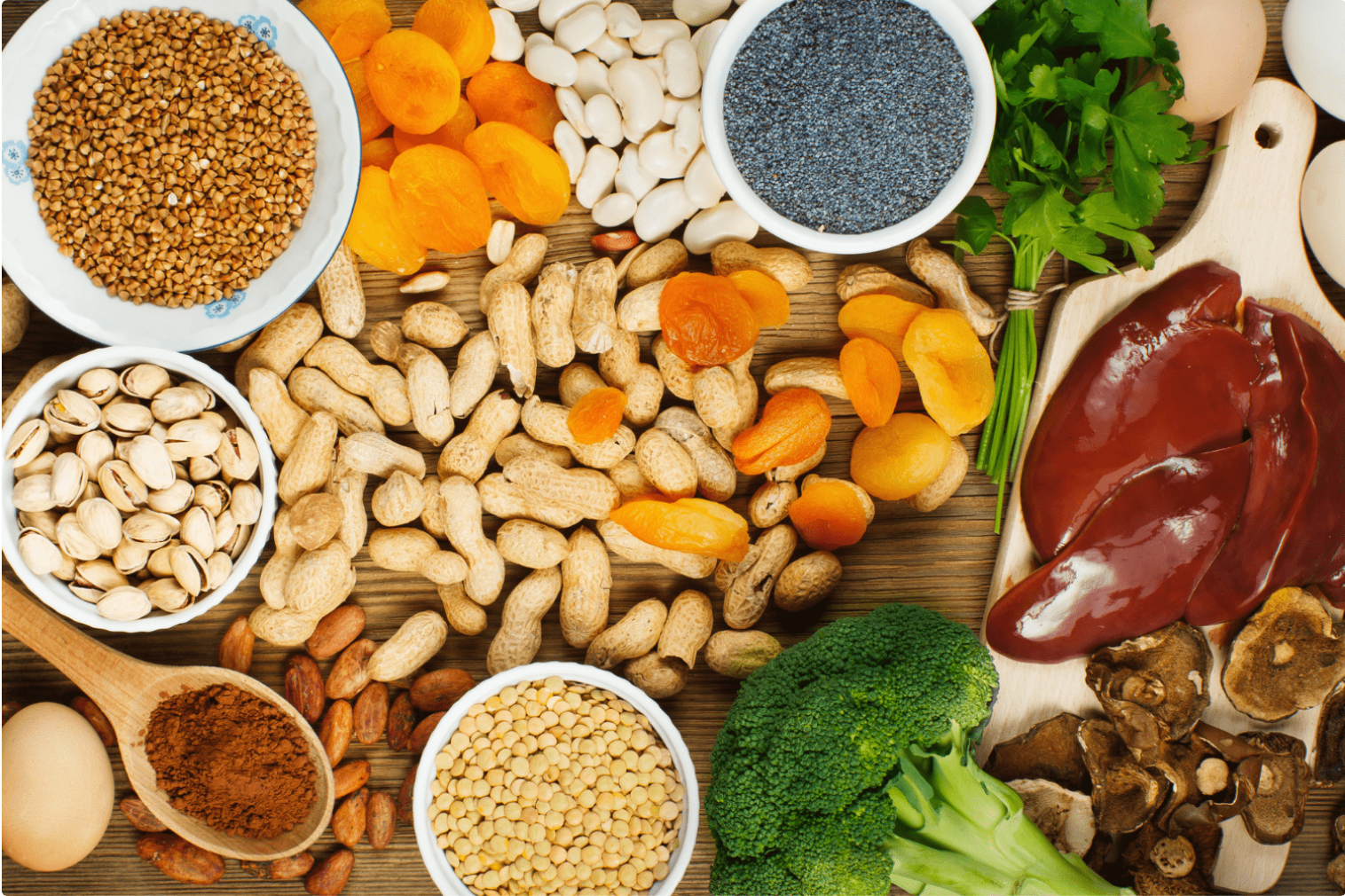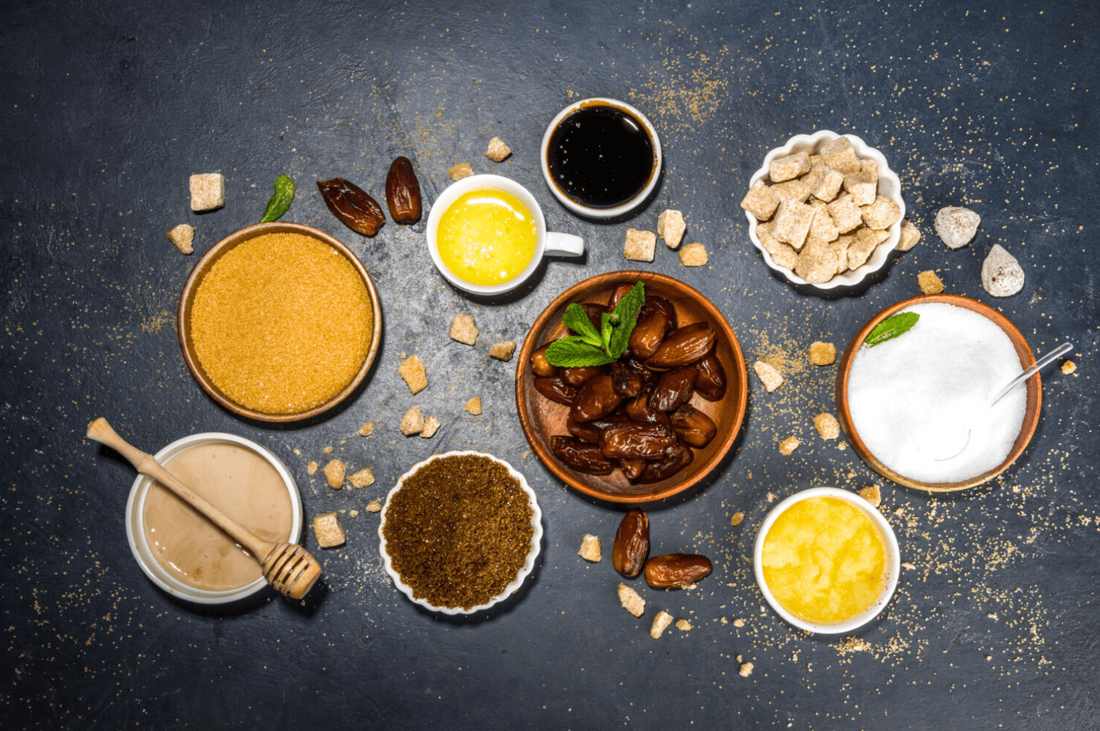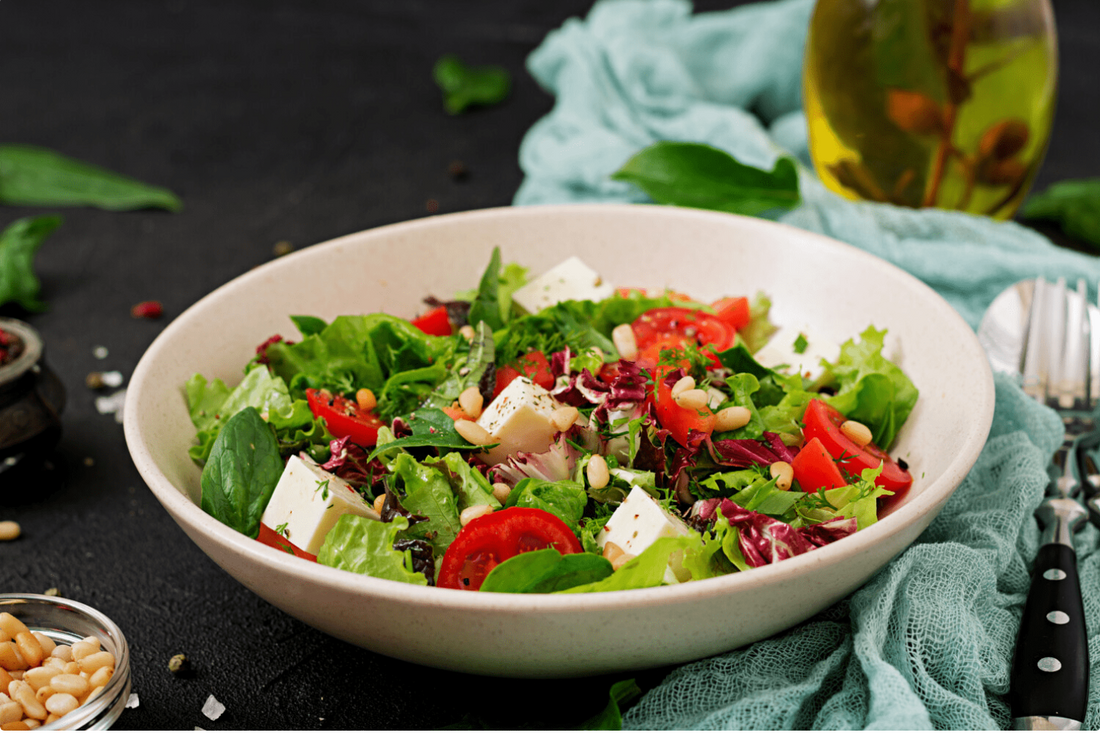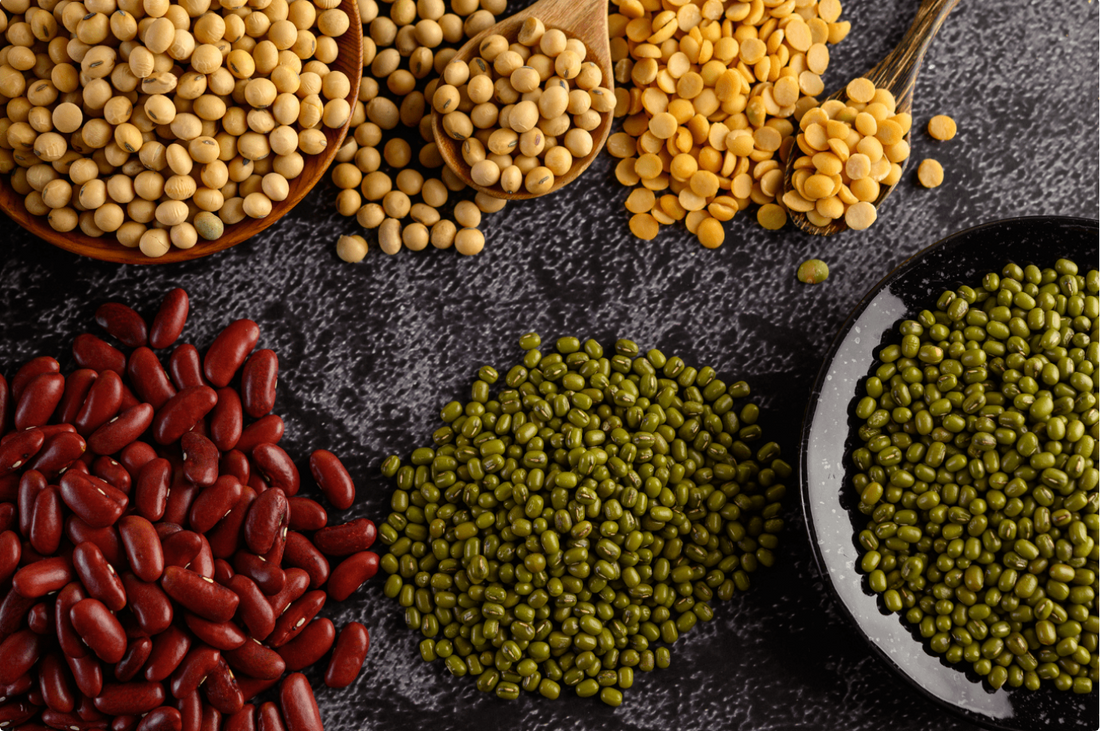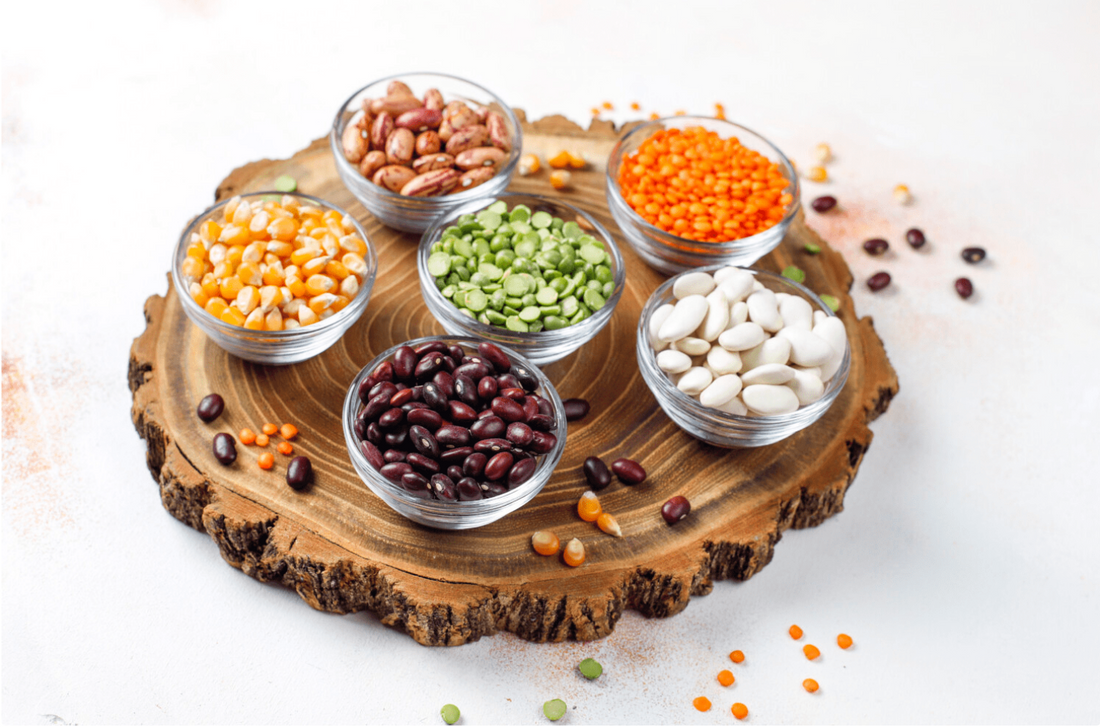Articles
Are Natural Sugar Substitutes The Best Alternative To The Sugar In Your Diet?
Blessed indeed are those of us who do not have a sweet tooth, a rarity indeed. But for the rest of us who love to indulge in desserts anytime, there can be a workaround in the form of natural sugar substitutes. The good news? These are packed with benefits too. Let us get to that in just a little bit. Before everything- What are sugar substitutes? Refined white sugar has been linked to serious ailments such as diabetes, obesity, and heart diseases. Now is it easy to wipe it off one’s diet? Practically no. Natural sugar alternatives with lower fructose and calorie levels such as xylitol, stevia, coconut sugar, honey, and jaggery can still be used to sweeten your favorite dessert. Dangers of using artificial sugar substitutes- Artificial sweetener molecules are similar to the regular sugar molecules that latch on to our sweetness sensory receptor. Since they are generally too different from sugar; our bodies cannot break them down into calories causing us to eat more, gain weight and make it difficult to digest the real sugar needed. Further, harmful chemicals used in food processing technology such as sulfur dioxide, phosphoric acid, and calcium hydroxide can be detrimental to one’s health. Why opt for natural substitutes like Honey and Jaggery? Natural sugar substitutes like organic jaggery powder or coconut sugar have a good dose of antioxidants, iron, calcium, and potassium. Coconut sugar is extracted from the sap of coconut palm and contains minerals like iron, zinc, calcium, and potassium. It also has a lower GCI than sugar. Natural Stevia sweeteners can lower blood pressure and blood sugar levels as well. The monk fruit sweetener contains a compound called mogroside is an antioxidant with anti-inflammatory properties. Honey has phenolic acids and flavonoids which also have anti-oxidant properties. How do you make a sugar substitute work for you? Well, natural, pure, and organic sugar substitutes need to first be a constant in every pantry. Most baking recipes can include jaggery, and maple syrup in the place of sugar, one may also include whole fruits in bread, cakes, and brownies. Most Indian desserts work well with jaggery, coconut sugar, or honey. Dates are another great sugar alternative. Use date paste in marinades, sweet sauces, and baking as well. Dates are rich in fiber, minerals, and vitamins. Now what is ideal is sticking to moderation. Replacing white sugar in your diet is indeed a strong step in the right direction but certainly, it needs to be followed by some don’ts. Stay away from aerated drinks and colas, since these have the highest sugar levels. Choose to munch a whole fruit as against a juice. Avoid any sweetener for your beverages. Store-bought baked goods are also high in sugar. Stay away from them. Now, none of this means that you should not have anything sweet. Balancing what you crave with something wholesome and healthy yet satisfying your craving is not hard. You just need a little forethought before you grab that delicious-looking pastry or a gulab-jamun!
Learn moreThe Magical, Mystical And Delicious Adventure Of Following A Healthy Natural Diet
“You are what you eat” is not just a proverbial statement brought up in discussions of healthy eating. It is the very essence of how an individual can start a sustainable eating routine that propels him or her towards their health goals. A diet is merely the sum of all constituents of food that goes into various meals of the day. The healthier it is -I e the more natural and pesticide-free food one consumes the better it gets. Do not get started right away on counting calories per meal. Carrying around a calorie calculator before meal times can be disheartening and with time, something that can hurt healthy eating. Contemplate how to start a healthy lifestyle overall, not merely a diet. We all deserve a fulfilling life first. Consuming natural pesticide-free nutrient-rich food lifts one’s spirits and motivates the individual to embrace healthy eating for life. Controlling how much goes in will have to follow. It’s not just about eating healthy, it’s about living healthy. Never associate every meal with the right calorific requirement of a person. Chemical-free natural food increases the quality of what is consumed and guarantees good health in the long run. Focus on quality over quantity first. Learn to love your body and give it what it deserves. Take a good long look at the mirror every morning and tell yourself that you are unique and special. Additional weight can be dropped, and belly fat or arm fat can be dealt with-provided you have a positive mind. Determine to fix nutritious meals and take charge of your diet one meal at a time. Now, what is nutritious? Simple. Refrain from preservative-loaded packaged food and ensure your grocery shopping involves only organic pesticide-free food grains. Cold-pressed oils, millets, and organic jaggery over refined oil, rice, and sugar. This translates to more wholesome meals. Put your mind to just that one meal at a given time. Make your healthy meals fun and adventurous. There is no end to playing around with fresh and colorful fruits and vegetables. Be it a salad, juice, or smoothie. You can get started with one kind every morning. Do you love your spices? Whip up a healthy bhel or crunchy channa/peanut chat salad too during tea time. Kindle your creative streak a little. Remember that weight management and stepping into healthy eating habits is a journey in life. One that needs to be flexible and sensibly executed one day after another. Understand your erstwhile lifestyle well, consider all factors, and introduce an exercise form into your daily routine too. If you do feel the need to indulge on an odd day, do it but in moderation. Making a dietary change is a mental exercise first, reaffirming an optimistic mindset is critical to positively impact your lifestyle. Stay in control, understand what will work for you, and then plan. Above everything, work on yourself with an open accommodating mind. Your body will listen to you.
Learn moreBusting BIzarre Food Myths That People Believe Over Healthy Eating!
Thanks to the advent of all mediums of expression, everybody today, is a self-professed health guru! One too many absurd food myths are doing the rounds in discussions on healthy eating and weight management. Eating right needs to be consistent and a daily exercise that does not need to be influenced by any of the following common food myths- Myth #1 : Eating late is not a healthy food habit as it makes one gain weight. Well, eating a heavy meal and immediately going to bed is a definite no-no. The logic is simple, once you lie down the blood circulation to the digestive system dips and this causes late digestion and improper absorption of nutrients. An ideal dinner time is at least three hours before bedtime. Now whether it is after 7 p.m, or not depends on when you go to sleep is it not? Myth #2: Eating more carbs will increase body weight. Carbohydrates are one of the three main essential building blocks, also known as macronutrients that make up all food. Protein and fat are the other two. Carbs are broken into sugars, starch, and dietary fiber. While sugar intake needs to be limited the other categories play a critical role in our health. Myth #3: You can eat whatever you want and still lose weight, as long as you "work it all out"! Weight gain or loss is a combination of factors such as calorie intake, BMR (Basal Metabolism Rate and RMR (Resting Metabolism Rate), and physical activity such as exercise. To lose weight an individual needs to follow a calorie deficit diet followed by his/her daily routine. Now the math of all of it needs to be accomplished with a healthy and observing his/her metabolism rates and nutritional needs. Myth #4: Portion control is a healthy food habit. Well, it most certainly is. But one entire portion of such fats or starch will not do the trick. Consuming fewer calories per meal needs to be a well-thought-out exercise while being mindful of nutrients that go into the plate. Small portions of frequent eating will also dissolve the purpose of weight loss right? Myth #5: If you skip breakfast, you'll lose weight because it's not technically a meal. This has to be the most absurd food myth. Breakfast replenishes the body with glucose, boosts energy, and provides all other essential nutrients needs for good health. Eat a big breakfast, but watch what goes in. Myth #6: Treat yourself to a cheat meal once a week to make up for "bad" days of eating healthy food throughout the week (and vice versa). Eating healthy food needs to be a choice made by an individual, it is no punishment, is it? Making smart meal plans, every day (mind you this can include fried foods too) while keeping a tab on overall calorie intake is a smarter way to remain fit is it not? Myth #7: You can lose a lot of weight by cutting out sugar. Did you know that removing sugar completely from the diet also means removing fruits, certain vegetables, and milk/curd intake? There is no real healthy alternative to sugars. In fact; World Health Organization (WHO) recommends that sugar needs to be at least 5% of your daily calorie intake. Sensible eating and educated decisions are those that can actually debunk these baseless health-related myths. What works for one individual might not work for another. Following a good diet is a culmination of many factors, certainly, food myths have no role in that.
Learn moreFour Brothers And A Bullet: Four Most Common Types Of Pulses And Their Nutritional Facts
Pulses are a sub-category of the legume family, and the term “pulse” refers only to the dried seed of the plant. Dried beans, lentils, and peas are the most commonly known and consumed types of pulses; are versatile and can be included in a variety of meals. Pulses have a host of health and nutritional benefits; they contain high levels of protein and essential nutrients such as fiber, folate, calcium, iron, and vitamin C. Pulses can be stored for many months without losing their high nutritional value. Pulses are as good for soil health as they fix nitrogen and boost the productivity of farmlands in the long term. Many pulses promote higher rates of accumulation of soil carbon and have been used by farmers in intercropping for many centuries now. Let us now look at the following four main types of pulses and their nutritional facts. beans, chickpeas, lentils, and peas. Beans- Moong beans or green gram is a widely used pulse across cuisines and is delicious when soaked and cooked well. Rajma or kidney beans are another. Kidney beans have protein that can help expedite the muscle-building process. Overall, these beans help strengthen bones, keep the heart-healthy, and lower harmful cholesterol levels. They are also rich in fiber and can help improve digestion. What is more? They can be churned out into lip-smacking recipes across any cuisine. Chickpeas- Black and white chickpeas have a delicious nutty flavor and a starchy texture when cooked and are popular across India, Iran, Mexico, and Ethiopia. They are packed with nutrients, are protein-rich, and help in weight management. They help control blood sugar, are highly recommended for good bone health, help build red blood cells, and is packed with vitamin B6 which helps elevate brain functions. It is always important to soak chickpeas, for at least 8 hours before cooking them. Lentils- Who doesn’t like a humble Dal preparation? One of the most nutritious pulses provides a variety of health benefits and a splendid variety to choose from! They are an excellent source of protein, dietary fiber, and vitamin B and can protect the heart. Red split lentils are known to be a food to increase eyesight. Dals can be dry roasted, powdered, and made into Rotis/ pancakes as well. Peas- Black-eyes peas and garden peas are some popular varieties of peas. They are rich in dietary fiber and one of the best plant-based proteins. They are also a useful source of iron which is needed for making red blood cells and transporting oxygen around the body. Peas are also popular across cuisines. Above all, pulses are packed with a host of health benefits, inexpensive, easily available anywhere in the world, can be stored without a fuss, and are highly versatile. All one needs to be mindful about, is washing thoroughly, and soaking as needed before it is consumed. A selfless set of four brothers ( read 4 varieties of pulses) who bring along their powerful ammo anywhere and anytime for the larger good. (read nutritive value)! Shop Link – https://safeharvest.co.in/collections/pulses
Learn moreHealth Benefits of pulses you cannot ignore. Say hello to the powerhouses of Iron.
Yawning away on a crisp new morning? Does your usually shiny skin look pale all of a sudden? The chances are that you are anemic and might need an additional dose of iron supplements. Well, it is one of the most common deficiencies with research suggesting that almost 80 percent of people have it the world over especially women. Luckily it is the easiest to fix too. A generous dose of including pulses in your diet could be a good start! Did you know that the white bean has the richest content of iron among pulses? A cup of white beans serves up to 6 mg. Half a cup serving of lentils contains 3.30 mg. The benefit of consuming pulses does not stop here. Pulses can form a part of all your meals easily- Here is how. 1. They are healthy, filling, and nutrient-rich. Pulses and beans are high in protein, and low in fat, and due to the presence of a lot of fiber, they keep you full for a longer time too. A diet rich in pulses is a great way to eat less unhealthy saturated fat, manage your weight and keep your digestive system healthy. Pulses are also a very rich source of many vitamins and minerals such as iron, zinc, calcium, and magnesium. 2. Pulses are friendly on the pocket as well as sustainable for the environment. Pulses are easy to cultivate, do not require the addition of nitrogen-based fertilizers that usually harm the soil, and very less water. They help farmers adopt crop rotation, in the process making the occupation more profitable. Hence they become automatically pocket-friendly. 3. Chemical-free pulses can do wonders for your body. Organic pulses are of a higher quality and are packed with vitamins and minerals as they do not have any chemical additives that may interfere with these nutrients. The pulses taste better and be healthier when organically grown without pesticide use and the presence of high antioxidants gives you a better taste and flavor. 4. Make sure to soak your pulses overnight. Washing and soaking lentils enhance digestion and nutrition absorption as they can neutralize lectins and phytates present that can cause gas and bloating. Soaking lentils increase the mineral absorption rate of the body. An enzyme called phytase is activated when the dal soak and this helps in breaking down phytic acid and helps in binding calcium, iron, and zinc. This makes the absorption process much easier. Soaking also activates a compound called amylase that breaks down complex starch in lentils that help in easy digestion. You may soak and sprout legumes and beans (part of the pulse family) and include them along with fresh vegetables for a snack or a lunch salad. You can include in your lunch menu any kind of cuisine and well, as a thin dinner soup as well! As versatile as any meal with pulses and packed with a host of benefits- mostly importantly iron.
Learn moreConsuming Pesticide-Free Pulses Helps Reduce The Carbon Footprint Created. Here Is How.
Pesticides have been widely used to control the growth of weeds and prevent crop damage by insects, rodents, and mold. Post-harvest additives are used to enhance shelf life and prevent spoilage. Most of the time, a small amount of pesticide- residue remains in food grains which can be alarming and since linked to a range of diseases and disorders. Pesticides also contaminate the soil, and turf; toxic to a host of other organisms including birds, fish, beneficial insects, and non-target plants. Alternative methods in organic farming like integrated pest management (IPM), crop rotation, or organic farming help retain the goodness of grains and pulses as well as safeguard the environment. Let us specifically talk about organic and pesticide-free pulses today. Why is consuming organic pulses a smart choice for you and the environment? Pulses are high in soluble fiber that helps reduce blood cholesterol levels and helps prevent constipation. Pulses are particularly high in the B vitamin folate and regular consumption of pulses is said to reduce the risk of heart disease, diabetes, and certain types of cancer. This superfood is a versatile, and easy-to-prepare ingredient that can be used in any meal- be it entrees, salads, or bread too. Pulses are the easiest to grow and growing them promotes sustainable agriculture (crop rotation) and are resilient to climate change as well. Consuming organic pulses is a water-wise choice since most pulse crops are adapted to drier environments and well-suited to arid areas. Some pulses, like lentils and peas, can extract water from a shallower depth, thereby leaving more water in the ground for crops that follow. Legumes can be cultivated easily all year round and not just over the summer months. One of the important features of pulses is their nitrogen-fixing and soil-bound phosphorus fixing properties, which are closely associated with improving soil fertility. It can fix large amounts of nitrogen, up to 80 percent from the air through biological fixation in the nodules on the pulse crop roots. They promote higher rates of accumulation of soil carbon over cereals and grasses. Through crop rotation farmers can start integrating pulses into their production of basic cereals through rotations, intercropping, or as cover crops. Cultivating organic pulses also helps reduce the need for synthetic fertilizers and pesticides while still contributing to an increase in overall yield. Now this creates a more diverse environment at the field level, by supporting a broader range of insects and “wildlife” above ground and bacteria and fungi in the soil. This paves way for a more resilient “ecosystem” that helps keep harmful insects, diseases, and pathogens in check, automatically reducing the need to use synthetic pesticides. A sustainable diet with organically sourced pulses has the lowest environmental impact, with low GHG emissions (this is related to the cultivation of crops using nitrogen fertilizers). Now, this also supports local farmers and communities. Consuming organic pulses does a world of good while being easy on the pocket, and reducing the carbon footprint created as well. Can anything get better than this?
Learn moreHow Do You Get Your Kids To Consume Lentils? Here Are 5 Fun Ways
There can be nothing more boring than a plain bowl of bland lentils; for adults and children alike. This surely does not imply it can be skipped especially when it is packed with a lot of nutrition. Lentils are a good source of fiber which is crucial for the digestive health of children. They also contain a good dose of iron, zinc, and potassium. Sneak in lentils into your healthy cooking regime for kids and get the little ones to eat them unwittingly at first. Let us now look into the how of it. Familiarise your children with lentils, through fun games. Pick a choose a lentil for the day and make it into the “star” of the day. Let’s say you pick chickpea- think of all that can be churned out using this ingredient for the day. Say a colorful veggie-loaded hummus or a patty that can go into a burger etc. Let us a look at more kid-friendly lentil recipes. 1. Puree lentils and add them to the regular food your child enjoys. Stir in lentil puree into pasta, or serve thick lentil pasta as a side with boiled vegetables or a homemade crispy. 2. Add lentils to a rich and creamy soup. Lentils like yellow dal or moong-dal (green gram dal) can be soaked; cooked until soft and dished out as a thick warm soup, especially during winter. Since lentils have a mild flavour, children will hardly notice the difference. 3. Use them in meatballs or meatloaf. Soak and grind a suitable lentil coarsely, spice it up adequately, add some cheese and pan-fry them on a skillet. You may serve these with noodles/gravy or as a dry snack. Alternately you can include a simple starch such as oats and flour, sauteed vegetables with the lentil paste, add spices and bake into a nice meatloaf. 4. Add them to veggie burgers and tacos. Chickpea patties are a popular choice as a burger filling. You may mix and match other not so delicate lentils as patties and serve them up in burgers. Make sure a lot of colorful vegetables are included for a nice crunch. You could also soak, grind and cook red beads as a filling for tacos/ tortillas. 5. Spice up your salads with red lentils. Brown, black or yellow lentils can be included in vegetable salads. Wash and cook any of these lentils and cook them for about 20 25 minutes, till they are done just right. Toss them into a vegetable salad of your choice with the right toppings- say a little honey might do the trick for the kids. Healthy cooking for kids is not really rocket science and making them eat lentils is not that much of an uphill task. One has to just focus and put a little effort into making kids consume lentils. Lentils are nutritional powerhouses and are very versatile and easy to cook. Before you know it, on an odd day, your little one will ask for that bowl of dal soup taking you back by surprise!
Learn moreKeep Your Smile On And Dive Into These Healthy And Clean Dessert Recipes
An absolutely decadent dessert holds the solution to many a conflict. However, this indulgence quickly leads to an escalation of numbers on the weighing scale. Let us unlock a chest of wonderful healthy Indian dessert recipes that will prove this wrong. Chikki- Roast 2 cups of peanuts till they are uniformly crisp and the skin peels off. Keep this aside. Heat a heavy-bottomed pan and add two spoons of water, add 1 ½ cup of the powdered jaggery and keep stirring for about five minutes. Once the syrup is glossy and thick, switch off the flame and stir in the peanuts well ensuring peanuts are coated well with the jaggery. Transfer into a greased tray immediately and make pieces. Chocolate Mousse with a twist- Soak 1 cup of chickpeas for five hours, rinse and drain. Pressure cook chickpeas in a liter of water. Put away the cooked chickpeas to use for another time. Take two spoons of cooked chickpeas in the water used to boil it, keep boiling this on medium flame, and reduce it by half. Microwave/double boil 75 gms chocolate and keep aside. Now take half a cup of this water and whisk it till it peaks. In this process, slowly add 2 spoons of jaggery powder to it. Now gently fold the chocolate into this mix, and allow it to set in the fridge for 4-5 hours. Garnish and serve. Coconut Laddoo – Roast 200 gms of desiccated coconut in ½ a spoon of ghee and keep aside. Boil ¼ cup of water and add 1 cup of jaggery powder to it and cook till all the jaggery is dissolved. Switch the flame off and add a pinch of cardamom powder to it. Add the coconut to this mixture and stir it up well. Once it cools down, pinch it into small balls and serve. Sweet Potato Brownies – A cup of mashed sweet potato, ½ cup of peanut/almond butter, and ¼ to ½ cup of cocoa powder is what you need. Preheat your oven to about 180 degrees C, and coat a baking tray with cooking spray. Quickly whip all these ingredients, until just blended. Transfer to the pan and cook for about 12-15 minutes. A high energy super healthy dessert is ready! Apple and Walnut Crumble- Cook a cup of chopped apples until soft. You may add some ginger too while cooking. Combine the dry ingredients ½ cup of butter, ½ cup of roasted and coarsely chopped walnuts, a few spoons of oats, and a few spoons of jaggery powder. In a baking dish, transfer the apple mixture and top it with the combined dry ingredients. Bake for 10 minutes at 200 C in a preheated oven. Allow it to cool down and serve. Banana Halwa- A super quick clean and healthy dessert- take about 4 ripe mashed bananas and cook them in 2 teaspoons of ghee for 15 minutes. Keep stirring. Add 4 5 tablespoons of jaggery powder to this and cook for another 5 minutes. Add a dash of cardamom powder Remove from the flame, cool it down and cut into slices. Kheer with dry fruits and figs- Soak a few almonds, cashews, and pistachios in warm water for a few hours. Separately soak a handful of figs and raisins in water. Wash a soak ¼ cup of rice for an hour. Cook rice the rice in milk, till the rice is soft. This will take about 20 25 minutes. Grind the dry fruits now in warm water and gently add this paste into this mixture. Switch off the flame and garnish with the chopped-up figs and raisins. Refrigerate for a few hours and serve. Gajar Ka Halwa- Fry a cup of grated fresh red carrots in 3 spoons of ghee. Cooking the carrots will take about 15-20 minutes. Now add ½ cup of jaggery and stir it in. Cook the entire mixture for about 10-15 min, till it thickens up. Garnish with fried nuts, cool down, and serve. Don’t you feel heartened that there are desserts that can be clean, healthy, and absolutely delectable too?
Learn moreBhel Puri: A Healthy Carnival Of Colourful Crispy And Calorie-Free Fun!
Good old puffed rice. Looks nondescript and boring right? But did you know that it is a nutritional powerhouse? Puffed rice or murmura as it is fondly called, is an easy-on-your-pocket anytime guilt-free indulgence. Healthy in its own right, it is rich in fiber thus promoting digestion. It can help the body fight infections due to its antioxidant and mineral properties. It is rich in calcium, iron, and vitamin D; it actively aids proper bone cell growth and regeneration. Facts apart, puffed rice is easily available, practically a versatile staple in an average Indian kitchen. Bhelpuri is perhaps the healthiest “avatar” of the humble puffed rice. Delicious and clean, Bhelpuri is a popular choice of healthy eating. Whipping up one anytime is also as hassle-free. Let us do this in steps. In a large bowl, pour out the desired quantity of puffed rice, broken wheat, and peanuts in equal portions. Now, this depends on the number of servings you desire. Finely chop up vegetables like onions, carrots, tomato, cucumber, and coriander leaves. Chop up a few green chillis as well. Slice a few lemons in half and keep them aside. Add the chopped onions and carrots to the puffed rice mixture. Add a little salt and a dash of cooking oil. This is to just make the ingredients stick together. Squeeze lemons, as per your taste, and add salt accordingly. Give this a good toss. Garnish with tomatoes, cucumbers, and cilantro or coriander leaves just before serving. You may want to play around with more flavors in your bhelpuri. For example, you can whip up a green chutney (pudina and coriander leaves) and add a dash of it to this mix. There is an oriental version of the bhel puri as well. Go on and experiment. The point of adding vegetables like tomato and cucumber, in the end, is to ensure that the bhelpuri does not become soggy. The bhelpuri is best when it is served the moment it is made and is crispy. You can take the nutrient factor a notch higher by adding whole green gram sprouts and some pomegranate seeds to your bhel. The right mix of savory and tangy. Play around with the rice puffs. You can mix and match flavors with ease. Using additional ingredients depends on how healthy you want your bhelpuri to be. Make a smart choice by not adding additional crisps or anything more than a dash of oil. There is not much effort that is needed to make a quick yet nutrient-rich bhel puri for a snack. The puffed rice can almost always accommodate anything!
Learn more